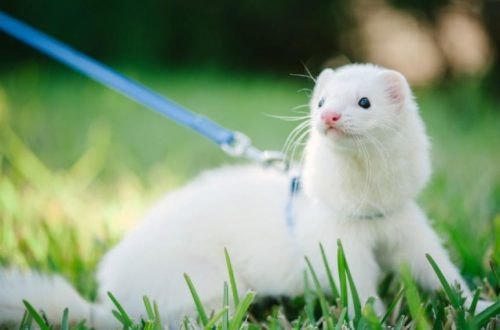
What we know about desert foxes and why you shouldn’t keep them in your home
Fenech is the smallest member of the canine family. This is a small fox of an unusual, very beautiful appearance, living in a desert area. It got its name from the Arabic word fanak. It means “fox” in translation.
But some scientists deny ownership fenech to the fox family. They have too many differences.
- Foxes have more chromosomes
- Fenechs lack musky glands for marking territory.
- Fennecs, unlike foxes, are very sociable. They live in flocks of up to 10 individuals. The flock usually consists of a couple and their children, sometimes the offspring grows up and stays with their parents. Sometimes two neighboring families can unite into one. They love to talk to each other: bark, whine and howl.
Based on these facts, phoenixes are assigned to a separate genus Fennecus.
Contents
Why do you have such big ears?
The main feature of these small animals are very large ears – they grow up to 15 cm. And the body of the fennec fox is only 30 cm long!
Thanks to its large hearing organs, the desert fox has the ability to hear your prey under the sand and detect the slightest movement. The ears also help to remove excess heat from the body due to the blood vessels located close to the skin. For a comfortable life in the desert, he simply needs it.
Fenech’s paws are also adapted to walking on hot sand – they are covered with a thick layer of wool. The coat color provides it with maximum camouflage in the desert. The kidneys of the animal are adapted to a fairly long life without water. The little fox receives the minimum necessary liquid from food. Like other foxes, the fennec fox does not have sweat glands.
In the desert, fennec foxes prefer thickets of grass, providing them with shelter and food. For themselves, they dig holes with a large number of emergency exits.
They hunt, like foxes, alone. The maximum length of their jerk is 120cm, while in height they can jump 70-80cm. They feed on almost everything: the fruits of trees, insects, vertebrates, plants, bird eggs. Do not disdain carrion,
For a long time, scientists could not understand how weak and small creature can steal and eat ostrich eggs. Fenech has weak jaws, claws are hidden in a layer of fur. How does he manage to crack an egg? It remained a mystery for a long time, until one of the scientists accidentally saw this whole secret process.
“Fenech pushed the egg in front of him on the sand. I decided that he wanted to drag him to his mink and was very surprised – after all, there was a long way ahead! But the little animal turned out to be much smarter. He rolled the egg right on a small stone. And… Boom! The shell shattered into small pieces, and the fennec fox has already begun its meal!”
Reproduction
The female brings offspring no more than once a year. The mating season begins in February and lasts only a few days. During this period, males increase aggression, and they mark the territory with urine. Male and female stay together after mating. Pregnancy lasts almost 2 months. Few puppies are born, from 2 to 6. The mother is constantly with them in a hole lined with grass, feathers and wool. The father of the family gets food, but does not even look into the hole – the females drive the father away from the puppies during this period. At the age of one month, babies leave the den, but only at 3 months are they able to move away from it at a decent distance.
Puberty Desert foxes begin as early as 7 months of age. But often the offspring stays with their parents and helps to raise new babies. Their life expectancy is 10-12 years.
Enemies
The main danger for desert foxes is caracal and desert owls. Other animals simply will not be able to catch fast little animals. But the main enemy is man. Foxes are killed for their valuable fur, caught and sold as pets.
Phoenixes in our house
Keeping such a cute animal at home is not the cheapest pleasure. You will have to spend about 100 thousand rubles to buy it. But this will only be the beginning. Fenech needs to be provided with conditions as close to natural as possible, otherwise you risk finding a hole gnawed in your favorite sofa. Ideally, the baby needs a whole room or aviary. Be aware that Fenech can dig a tunnel and escape. Try to prevent it.
It is better to feed them with their usual food – fruits, eggs, insects and mice. Pampering with all sorts of goodies is not recommended, their stomach is not adapted to this.
Disadvantages of living in an apartment
Foxes are primarily wild animals. These are not domestic kittens, problems may arise with them:
- desert foxes are very difficult to train to go to the tray;
- the smell from them is very significant;
- there are few veterinarians capable of providing qualified assistance to such an exotic animal;
- getting live insects and mice in many cities is quite difficult.
The fennec is the national symbol of Algeria. Their football team is called Desert Foxes, and the image of a small fox flaunts on the coins.





